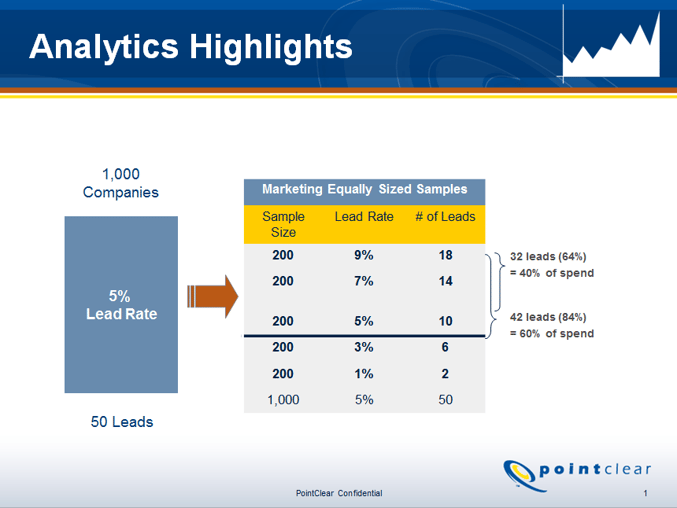
When evaluating the value of your database(s), is there a better, more effective alternative to either contacting all prospects in the databases or throwing them all out and starting over? Yes! You can save a lot of money and salvage the value of your database(s) by intuitively ranking the prospects in the database and testing them by calling into a sample of each segment.
By applying market segmentation techniques and testing segments you can identify and then prioritize on those segments that generate the highest return and eliminate those segments where the return is not sufficient to invest the time and money in the clean-up.
Traditional Database Marketing Cleanups Miss the Mark – And The Potential
The desire to clean-up an existing database is an intuitive reaction to demands for more efficiency in marketing: leverage existing prospect data to drive new revenue.
But that's easier said than done as databases are often characterized by outdated, inaccurate or sparse "firmographic" data needed to support market segmentation and testing. In addition, prospect databases usually lack critical opportunity information including the following:
- Current "pain" or challenges at the company
- Current product environment (as it relates to the potential solution)
- Correct decision making team and buying process
- Plans for short- or mid-term purchases
Still, if you're a seasoned marketing or sales professional, your gut tells you there is opportunity hidden in these databases. The question is, "How can I best clean them and mine them for value?" Conventional wisdom calls for running a database cleanup initiative, followed by a database marketing-driven lead generation program, setting in motion a "one-two punch" with high expectations for success.
However, all too often with this approach to database marketing return falls far short of potential. Why? Because you spend a lot of money cleaning up the entire database when only a fraction of the prospects in the database are worthy of the clean-up. Traditional cleanup programs only focus on replacing dirty or absent data with fresh, correct data. They do not add the market segmentation or prioritization value needed to predict success. As a result, database marketing campaigns can only target all cleaned prospects, because the best prospects have not been identified.
The steps to achieving higher return through market segmentation include the following:
- Identify discriminating characteristics among the databases and lists
- Segment the databases and lists into small homogeneous cubes or layers of similar companies
- Conduct tests to profile and uncover opportunity in the cubes
- Analyze cubes to find high return segments and rank them as separate mini markets
- Use this intelligence to fully fund the right model for future programs
9-7-5-3-1
What we have found is that if you take a hypothetical list of 1,000 prospects, the list will break down into five groups of 200 each (just to keep the math simple, frequently there are more segments). After you intuitively rank the segments you test each segment by calling into the selected prospects. For example, you might select 300 out of the 1,000 prospects for testing and segmentation validation.
The slide below demonstrates how most marketing programs are run: on the left side of the sliced, 1,000 companies are marketed to, 50 leads are generated – no additional intelligence created. On the right side of the slide we find that first two segments resulted in 32 of 50 leads or 64% of all leads (though they represented just 40% of the list), and the first three samples resulted in 42 of 50 or 84% of all leads. More importantly, by focusing on the first three cubes, your company could have generated 84% of all its leads with only 60% of the marketing spend. Or, there is a way that you could generate 140% of the leads (70 leads) with 100% of the spend. Now, that's greatly improved marketing ROI! And, this test provides the market segmentation intelligence needed to fully fund and roll out database marketing programs targeting high-return segments. This process would also call for the probable decision to eliminate the bottom two segments of the list. Once the test universe of “duds” is identified, it is not difficult to remove “birds of a feather” (other duds) from your target list – this too saves a lot of potentially wasted marketing dollars.

Conclusion
The market segmentation techniques described here balance the principles of statistics with the realities of today's marketing budgets. They can predict the likely success of B2B database marketing programs, helping eliminate wasted dollars, time and resources. Ultimately, they deliver more profitable sales in a timely manner at a lower cost.
Topics: Database Marketing





